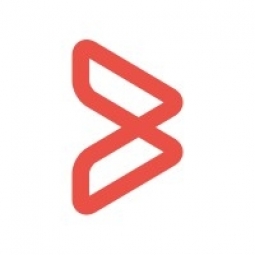Customer Company Size
Mid-size Company
Region
- America
Country
- United States
Product
- Compuware Topaz
- Compuware File-AID
- Compuware Xpediter
Tech Stack
- Mainframe
- COBOL
- DB2
Implementation Scale
- Enterprise-wide Deployment
Impact Metrics
- Productivity Improvements
- Customer Satisfaction
- Cost Savings
Technology Category
- Application Infrastructure & Middleware - Data Exchange & Integration
Applicable Functions
- Business Operation
Use Cases
- Process Control & Optimization
- Predictive Maintenance
Services
- Software Design & Engineering Services
- System Integration
About The Customer
The IMT Group, founded in 1883 and based in Des Moines, is a leading Midwestern P&C insurer with more than $300 million in assets. Like many companies of similar size and vintage, IMT depends heavily on its mainframe for core applications. The company's mainframe application environment is in transition, with a strategy focused on re-platforming select applications and converging mainframe and non-mainframe environments. This is due to the company’s newer web- and mobile-based applications depending on back-end mainframe resources. Therefore, IMT’s mainframe and non-mainframe developers have to work together.
The Challenge
The IMT Group, a leading Midwestern P&C insurer, heavily relies on its mainframe for core applications. However, the mainframe application environment is in transition. The company's mainframe transition strategy has two key objectives. One is re-platforming select applications, a process that requires intensive analysis of current mainframe code. It requires complete and accurate identification of “dead code”—sections of applications that have lapsed into disuse over the years, but remain present in source code. The other key objective is converging mainframe and non-mainframe environments. This convergence is taking place because of how the company’s newer web- and mobile-based applications depend on back-end mainframe resources. Both of these strategic objectives require developers to have clear, complete visibility into the structure and runtime behaviors of highly complex mainframe applications that have undergone a lot of change over the years and are not always well-documented.
The Solution
IMT has been making extensive use of Compuware’s mainframe solutions for about 20 years. These solutions include Xpediter and File-AID. Most recently, IMT extended its deployment of Compuware’s Topaz suite to include Topaz Workbench, Topaz for Enterprise Data and Topaz for Program Analysis with an emphasis on the Runtime Visualizer feature. These solutions provide a highly intuitive graphical environment for writing and reviewing code, understanding the behavior of that code in production and understanding the relationship between different applications and data sources across the mainframe environment. The broad Topaz suite provided IMT with several important new capabilities, including drag-and-drop application code and file management, common look-and-feel across languages, streamlined collaboration between developers with different skill sets, and fast, easy identification of “dead code.”
Operational Impact

Case Study missing?
Start adding your own!
Register with your work email and create a new case study profile for your business.
Related Case Studies.

Case Study
Remote Monitoring & Predictive Maintenance App for a Solar Energy System
The maintenance & tracking of various modules was an overhead for the customer due to the huge labor costs involved. Being an advanced solar solutions provider, they wanted to ensure early detection of issues and provide the best-in-class customer experience. Hence they wanted to automate the whole process.

Case Study
Predictive Maintenance for Industrial Chillers
For global leaders in the industrial chiller manufacturing, reliability of the entire production process is of the utmost importance. Chillers are refrigeration systems that produce ice water to provide cooling for a process or industrial application. One of those leaders sought a way to respond to asset performance issues, even before they occur. The intelligence to guarantee maximum reliability of cooling devices is embedded (pre-alarming). A pre-alarming phase means that the cooling device still works, but symptoms may appear, telling manufacturers that a failure is likely to occur in the near future. Chillers who are not internet connected at that moment, provide little insight in this pre-alarming phase.

Case Study
System 800xA at Indian Cement Plants
Chettinad Cement recognized that further efficiencies could be achieved in its cement manufacturing process. It looked to investing in comprehensive operational and control technologies to manage and derive productivity and energy efficiency gains from the assets on Line 2, their second plant in India.

Case Study
Airbus Soars with Wearable Technology
Building an Airbus aircraft involves complex manufacturing processes consisting of thousands of moving parts. Speed and accuracy are critical to business and competitive advantage. Improvements in both would have high impact on Airbus’ bottom line. Airbus wanted to help operators reduce the complexity of assembling cabin seats and decrease the time required to complete this task.

Case Study
Aircraft Predictive Maintenance and Workflow Optimization
First, aircraft manufacturer have trouble monitoring the health of aircraft systems with health prognostics and deliver predictive maintenance insights. Second, aircraft manufacturer wants a solution that can provide an in-context advisory and align job assignments to match technician experience and expertise.




